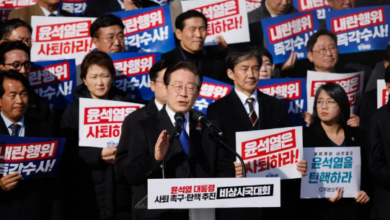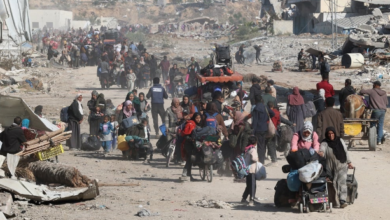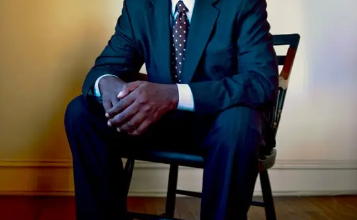Iran protests: The doctors risking it all to treat the injured

CNN
—
Arash says he has grown adept at spotting undercover Iranian law enforcement officers.
The doctor says they often visit the emergency room of the public hospital where he works as a general practitioner to search for people injured in the protests that have swept the country since 22-year-old Mahsa Amini died in the custody of the morality police after being accused of violating Iran’s conservative dress code.
Arash, 30, does his best to thwart the undercover officers, providing fake names for the people he is treating or sometimes flat out refusing to help.
He is among the Iranian doctors and medics who are putting their own freedom – and possibly, their lives – at risk by helping the protesters, either by treating them on the front lines of the demonstrations or covering up the nature of their injuries when they seek treatment in public hospitals.
And with Iranian authorities becoming increasingly heavy handed in their efforts to silence the protests, there are many in need of his help.
It’s difficult to know exactly how many protesters have been killed or injured since Amini’s death in September, with various groups giving different estimates.
Iran Human Rights, which is based in Norway, estimates that at least 201 protesters have died from injuries sustained in clashes with law enforcement agencies; Iranian state affiliated media said the toll, as of the end of September was 60.
Arash’s hospital treats only a fraction of those injured, but he says he sees a “wave” of people coming in for treatment every time a protest is on – both genuine protesters and undercover police on the lookout for injuries their own colleagues have likely caused.

And while few of those seeking treatment would openly admit to having been at the protests, the nature of their injuries – pellet wounds and baton bruises are common – are tell-tale signs easily spotted both by the undercover officers hunting them and doctors like Arash.
When he’s not working at the hospital, Arash goes to the protests to provide first aid, despite the risks to his own safety.
“My conscience can’t bear not to do anything to help my compatriots,” Arash says. CNN agreed to use a pseudonym to protect his identity, as he feared reprisals from the government.
He and other medics like him do their best to treat mild injuries on the spot, but in more severe cases, he says, “We try not to let them die and then we transfer them to hospital as an emergency.”
With fear of arrest putting off many protesters from seeking help openly, those suffering major injuries face an impossible choice: “Spend the next 10 years of my life in prison or let this broken femur heal on its own,” as Dr. Kayvan Mirhadi, an Iranian American doctor based in the state of New York, puts it.
Mirhadi helps to link up injured protesters who contact him on Instagram with doctors based in Iran who are willing to help – and can be trusted to keep quiet.
When the protests began, Mirhadi’s inbox was flooded with pleas for help. The doctor was stunned by the messages, often accompanied by photos of pellet shot wounds, broken bones and heads split open.
“Salam doctor… What to do with all these small bullets? … The hospital is full of police with ordinary clothing. The moment we enter there, they will arrest us. If the bullets remain inside, is it dangerous? Doctor, for god sake please answer me,” reads one message.
Mirhadi says he regularly receives over 500 messages a day. Many remain unread.
Giving and receiving help can be dangerous for both parties – protesters worry about doctors reporting them to the police, while doctors risk being ambushed by police posing as protesters seeking help. Nobody knows who they can trust.
About a week ago, Mirhadi says a doctor friend of his was arrested for treating protesters.
“He’s been trying to help as much as he can… Getting in his car driving around Tehran to find this person who’s bleeding inside the house and trying to stabilize them,” Mirhadi says.
“He’s a doctor, he didn’t do anything wrong.”
CNN reached out to Iranian officials for comment about the apparent arrest of protesters in hospitals but received no response.
Mirhadi believes giving or receiving treatment for injuries shouldn’t be a matter of politics, but a basic human right.
But for now at least, many protesters – other than those with the most severe injuries – feel they have no option but to hide away.
CNN spoke to several who had avoided going to hospital and instead sought help from friends or family with medical experience.
“Fortunately, my sister is a doctor. She brought me medicine like pomade, serum and tablets so my wounds would heal,” says Amir, 18. CNN agreed to use a pseudonym to protect his identity, as he feared reprisals from the government.
“I couldn’t go to the hospital or call the emergency services. They use ambulances to arrest and detain people. No place in the world has done this – but they did it in Iran,” he adds.
For Arash, the GP at the public hospital, there is one patient that won’t leave his mind.
Five days ago, he says a 16-year-old girl was brought into the emergency room by a group of protesters. She’d been struck on the head with a baton and suffered a “massive” hemorrhage and a brain contusion.
She was rushed to emergency surgery, but died anyway.
Some protesters have become faces of the movement after paying the ultimate price, but in this case the girl’s family chose not to publicize her death.
“That’s why she is stuck in my mind,” Arash says. “Because she deserves to be alive, at least in my memory, and be there freely.”
Source link





